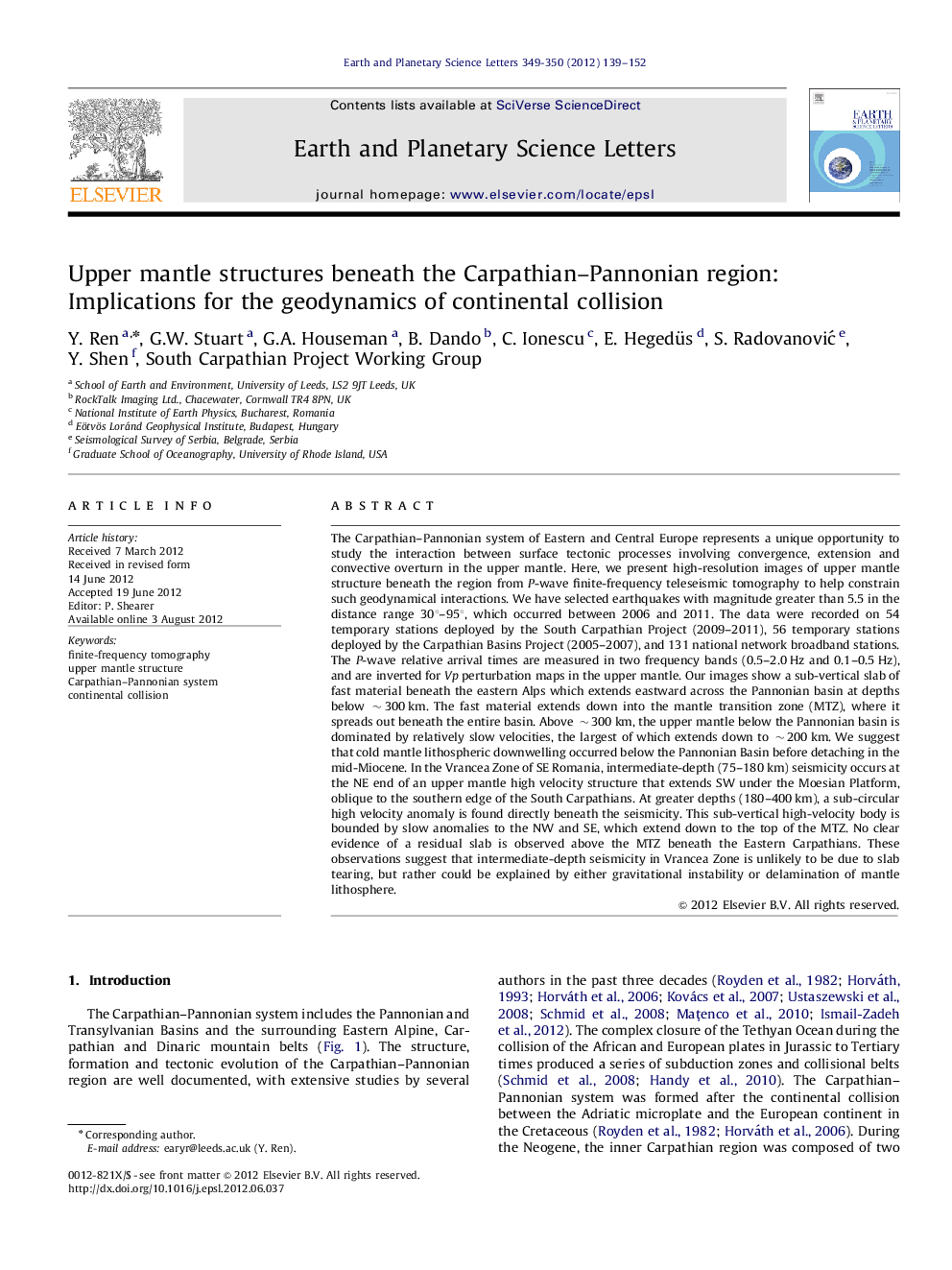| کد مقاله | کد نشریه | سال انتشار | مقاله انگلیسی | نسخه تمام متن |
|---|---|---|---|---|
| 4677403 | 1634798 | 2012 | 14 صفحه PDF | دانلود رایگان |

The Carpathian–Pannonian system of Eastern and Central Europe represents a unique opportunity to study the interaction between surface tectonic processes involving convergence, extension and convective overturn in the upper mantle. Here, we present high-resolution images of upper mantle structure beneath the region from P-wave finite-frequency teleseismic tomography to help constrain such geodynamical interactions. We have selected earthquakes with magnitude greater than 5.5 in the distance range 30°–95°, which occurred between 2006 and 2011. The data were recorded on 54 temporary stations deployed by the South Carpathian Project (2009–2011), 56 temporary stations deployed by the Carpathian Basins Project (2005–2007), and 131 national network broadband stations. The P-wave relative arrival times are measured in two frequency bands (0.5–2.0 Hz and 0.1–0.5 Hz), and are inverted for Vp perturbation maps in the upper mantle. Our images show a sub-vertical slab of fast material beneath the eastern Alps which extends eastward across the Pannonian basin at depths below ∼300km. The fast material extends down into the mantle transition zone (MTZ), where it spreads out beneath the entire basin. Above ∼300km, the upper mantle below the Pannonian basin is dominated by relatively slow velocities, the largest of which extends down to ∼200km. We suggest that cold mantle lithospheric downwelling occurred below the Pannonian Basin before detaching in the mid-Miocene. In the Vrancea Zone of SE Romania, intermediate-depth (75–180 km) seismicity occurs at the NE end of an upper mantle high velocity structure that extends SW under the Moesian Platform, oblique to the southern edge of the South Carpathians. At greater depths (180–400 km), a sub-circular high velocity anomaly is found directly beneath the seismicity. This sub-vertical high-velocity body is bounded by slow anomalies to the NW and SE, which extend down to the top of the MTZ. No clear evidence of a residual slab is observed above the MTZ beneath the Eastern Carpathians. These observations suggest that intermediate-depth seismicity in Vrancea Zone is unlikely to be due to slab tearing, but rather could be explained by either gravitational instability or delamination of mantle lithosphere.
► We obtain high-resolution Vp model in the mantle below Carpathian–Pannonian region.
► Our results show implications on geodynamic processes in Carpathian–Pannonian region.
► Mantle downwelling below eastern Alps could be driven by gravitational instability.
► We observe no clear evidence of residual slabs beneath the Eastern Carpathians.
► Delamination of lithosphere or gravitational instability explains Vrancea zone seismicity.
Journal: Earth and Planetary Science Letters - Volumes 349–350, 1 October 2012, Pages 139–152